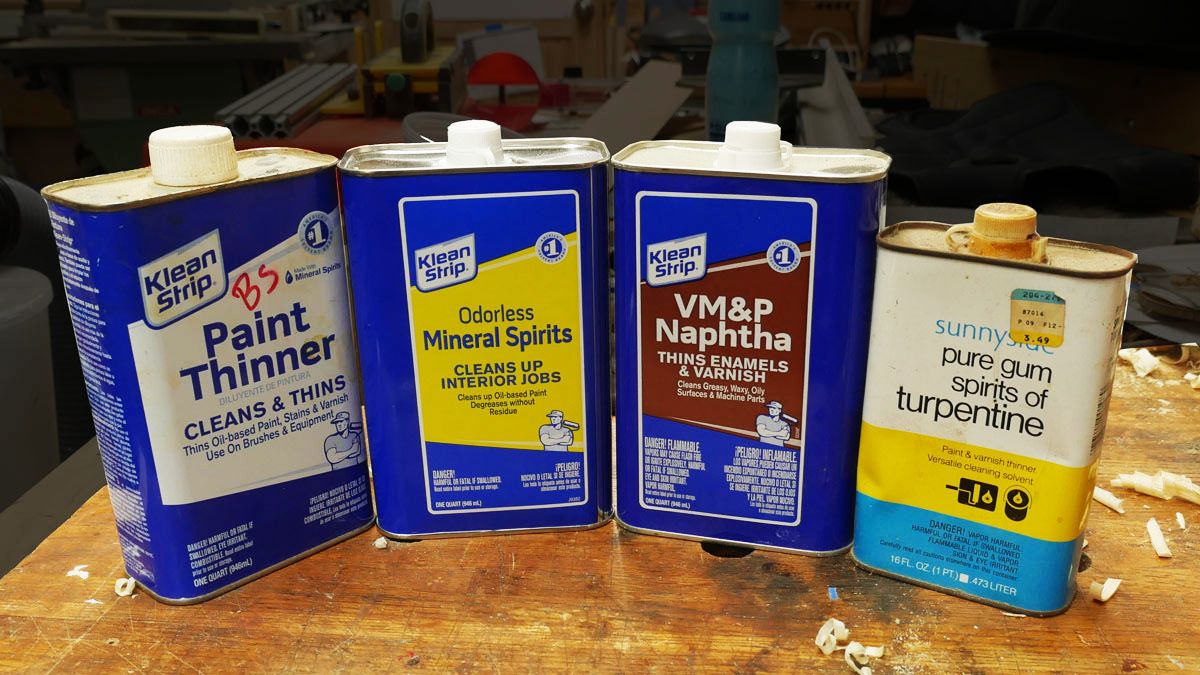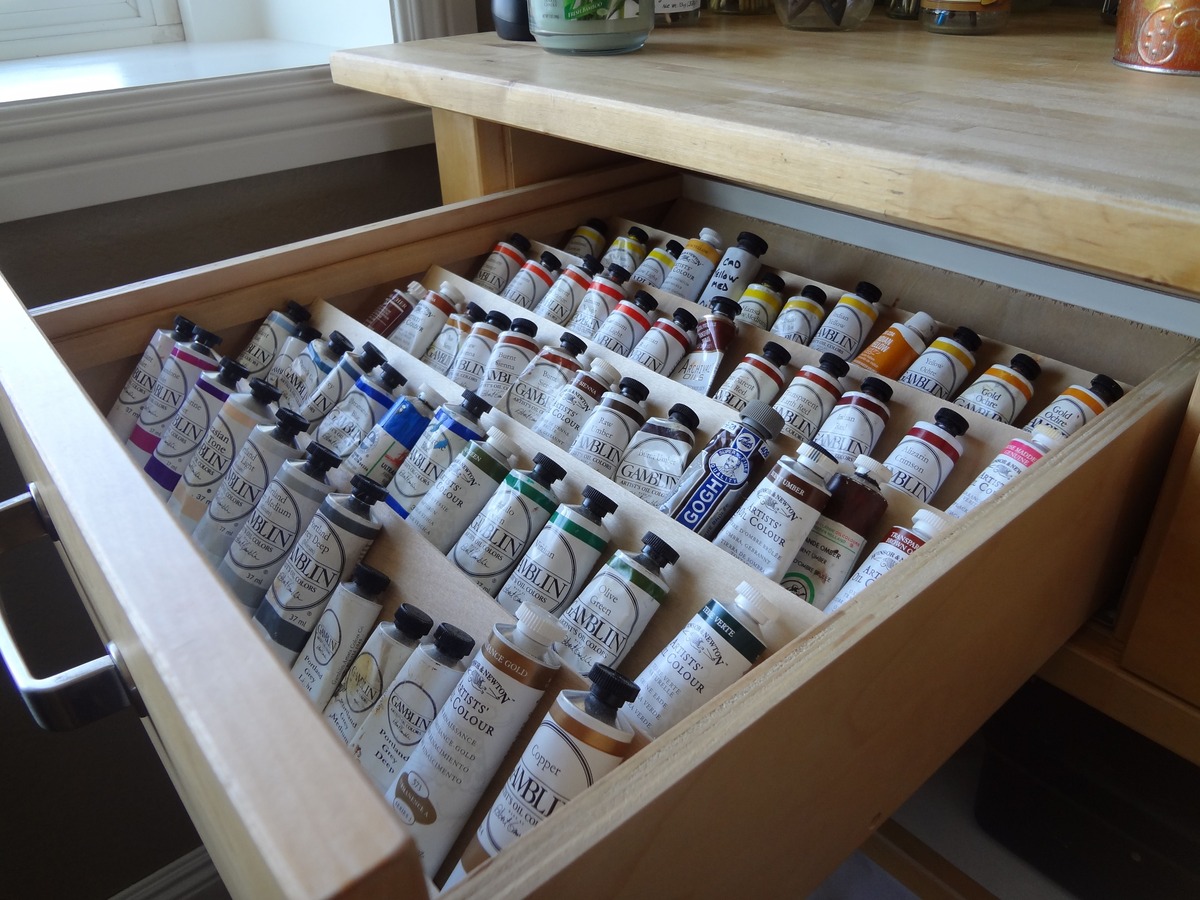

Articles
How To Store Paint Thinner
Modified: May 6, 2024
Learn the best way to store paint thinner safely and prevent any hazardous accidents. Read our informative articles for useful tips and guidelines.
(Many of the links in this article redirect to a specific reviewed product. Your purchase of these products through affiliate links helps to generate commission for Storables.com, at no extra cost. Learn more)
Introduction
Welcome to this comprehensive guide on how to store paint thinner. Whether you’re a professional painter or a DIY enthusiast, paint thinner is an essential tool for cleaning brushes, removing paint splatters, or thinning oil-based paints. However, it is important to handle and store paint thinner with care due to its flammable and potentially hazardous nature.
In this article, we will delve into the details of paint thinner and offer expert tips on how to store it safely. We will also explore the importance of choosing the right container and provide guidance on the proper disposal of used paint thinner.
By following the guidelines outlined in this article, you can ensure the longevity of your paint thinner and minimize health and environmental risks associated with its storage and disposal.
Key Takeaways:
- Properly storing paint thinner is crucial for safety and longevity. Choose the right container, store it safely, and dispose of it responsibly to minimize health and environmental risks.
- Understanding the nature of paint thinner and following expert guidelines ensures safe storage and disposal. By adhering to best practices, you can enjoy the benefits of paint thinner for your painting projects while prioritizing safety and environmental responsibility.
Read also: 14 Incredible Paint Thinner For 2025
Understanding Paint Thinner
Before we delve into the nuances of storing paint thinner, it is important to have a solid understanding of what exactly paint thinner is. Paint thinner is a solvent that is primarily used to dilute or thin oil-based paints. It is a combination of various chemicals, such as mineral spirits, turpentine, naphtha, or acetone, which are designed to dissolve and disperse paint pigments.
Paint thinner is commonly used to clean paintbrushes, remove dried paint from surfaces, and thin oil-based paints for better application. It is important to note that paint thinner should not be confused with paint remover or stripper, which are used to completely remove paint from surfaces.
When working with paint thinner, it is crucial to follow safety precautions due to its flammable and potentially harmful nature. The fumes emitted by paint thinner can be toxic if inhaled in large quantities or for prolonged periods. Therefore, it is advisable to use paint thinner in a well-ventilated area and to wear protective gloves, goggles, and a mask to minimize exposure.
Now that we have a basic understanding of paint thinner, let’s move on to the next section: selecting the right container for proper storage.
Selecting the Right Container
When it comes to storing paint thinner, selecting the right container is crucial for maintaining its effectiveness and safety. Here are some key factors to consider:
- Material: Choose a container that is made of metal or high-density polyethylene (HDPE) plastic. These materials are resistant to the chemical properties of paint thinner and help prevent leaks or spills. Avoid using containers made of glass or low-density plastics, as they may react with the paint thinner or become brittle over time.
- Size: Opt for a container that is large enough to hold the amount of paint thinner you typically use or purchase. A container that is too big may result in excess air space, which can cause the paint thinner to evaporate more quickly. Conversely, a container that is too small may not provide enough room for thorough mixing or proper storage.
- Lid: Ensure that the container has a tight-sealing lid or cap to prevent evaporation and minimize the risk of spills. Look for containers with a gasket or seal to provide an extra layer of protection. Additionally, choose a lid that is easy to open and close securely.
- Labeling: Once you have selected an appropriate container, label it clearly with the contents (“Paint Thinner”), the date of purchase or opening, and any relevant safety information. This will help you identify the substance and track its shelf life and usage.
Remember, it is important to dedicate a specific container solely for storing paint thinner. Do not use food or beverage containers that may be mistaken for something else or accidentally ingested.
Now that you know how to select the right container, let’s move on to the next section: storing paint thinner safely.
Store paint thinner in a cool, dry, and well-ventilated area away from heat and flames. Keep it tightly sealed and away from children and pets.
Storing Paint Thinner Safely
Proper storage of paint thinner is essential to ensure the safety of yourself, your home, and the environment. Follow these guidelines to store paint thinner safely:
- Location: Choose a well-ventilated, cool, and dry area for storing your paint thinner. Avoid storing it near sources of heat or flames, such as a furnace or water heater, as paint thinner is highly flammable. Keep it away from direct sunlight to prevent degradation of the chemicals.
- Vertical Position: Store the container of paint thinner in an upright position. This helps to reduce the risk of leakage or spills and allows you to clearly see the label and cap for easy identification and access.
- Secure Storage: Ensure that the container is placed in a secure location, out of the reach of children and pets. Consider using a locked cabinet or high shelf to prevent accidental exposure or ingestion.
- Separate Storage: Store paint thinner away from other chemicals or household items. Some substances, such as bleach or ammonia, can react with paint thinner and create toxic fumes or hazards. Keep it separate from food, beverages, and medication as well.
- Temperature: Maintain a consistent temperature for storing paint thinner. Extreme heat or cold can affect its chemical composition and potentially compromise its effectiveness. Aim for a temperature range of 50-80°F (10-27°C).
- Regular Inspections: Regularly check the container for any signs of damage, such as cracks or leaks. If you notice any issues, transfer the paint thinner to a new container or dispose of it properly.
Remember, it is crucial to follow the manufacturer’s recommendations for storing paint thinner, as some brands may have specific instructions or requirements.
Next, we will explore the proper disposal of used paint thinner to ensure environmental responsibility and safety.
Proper Disposal of Used Paint Thinner
Disposing of used paint thinner is important to protect the environment and comply with local regulations. Follow these guidelines for the proper disposal of used paint thinner:
- Reuse: If the paint thinner is still in good condition and not heavily contaminated, consider reusing it. Pour the used paint thinner into a clean, labeled container and let it sit undisturbed. Over time, the paint particles will settle to the bottom, leaving the clear paint thinner on top. Carefully pour off the clean paint thinner for future use and dispose of the remaining residue properly.
- Municipal Programs: Check with your local waste management or recycling center to see if they accept used paint thinner. Many municipalities have specific programs or collection events for hazardous waste disposal. Follow their guidelines for packaging and drop-off.
- Evaporation: In some cases, you can let the used paint thinner evaporate in a well-ventilated area. Place the container in a safe location away from ignition sources and allow the paint thinner to evaporate completely. Once it has evaporated, the container can be disposed of in your regular household trash. However, be aware that this method may not be permitted in all areas due to environmental regulations.
- Specialized Disposal: If you have a large amount of used paint thinner or are unsure about disposal methods, contact a hazardous waste disposal facility. They have the expertise and resources to handle and dispose of hazardous materials safely.
- Do Not Pour Down Drains or Dump Outdoors: Never pour used paint thinner down drains, sinks, or toilets, as it can contaminate water sources. Similarly, avoid dumping it outdoors, as it can seep into the soil and harm plants, animals, and groundwater.
Always remember to consult local regulations and guidelines for the proper disposal of hazardous materials. It is crucial to handle and dispose of paint thinner in a responsible and environmentally-friendly manner.
Next, let’s wrap up this comprehensive guide on storing paint thinner.
Read more: How To Store A Painting
Conclusion
Properly storing paint thinner is essential for both safety and longevity. By following the guidelines outlined in this article, you can ensure the safe storage and disposal of paint thinner.
Understanding the nature of paint thinner is the first step towards responsible handling. Remember that paint thinner is a solvent used to dilute oil-based paints and should be used in a well-ventilated area, with proper protective gear.
Selecting the right container is crucial for storing paint thinner. Choose a container made of metal or HDPE plastic, with a secure lid. Label the container clearly and store it in a cool, dry location away from heat and direct sunlight.
When it comes to disposing of used paint thinner, consider reusing it if possible. If not, check with local waste management or recycling centers for proper disposal methods. Avoid pouring paint thinner down drains or dumping it outdoors to protect the environment.
By adhering to these guidelines, you can ensure the safety of yourself, your home, and the planet. Proper storage and disposal of paint thinner not only minimize health and environmental risks but also contribute to a more sustainable and responsible approach to painting.
Remember to always consult the manufacturer’s instructions and local regulations for specific guidance on the handling, storage, and disposal of paint thinner. With proper care and attention, you can safely enjoy the benefits of paint thinner for your painting projects.
Thank you for reading this comprehensive guide on how to store paint thinner. Happy painting!
Now that you've got the scoop on storing paint thinner safely, why stop there? Dive into our next feature, which unveils a selection of must-have paint supplies set to make waves in 2024. Whether you're refreshing your toolkit or just curious about the latest trends, this article is packed with insights that promise to add color and efficiency to any painting project. Don't miss out on these essential tools that can transform the way you approach your next masterpiece.
Frequently Asked Questions about How To Store Paint Thinner
Was this page helpful?
At Storables.com, we guarantee accurate and reliable information. Our content, validated by Expert Board Contributors, is crafted following stringent Editorial Policies. We're committed to providing you with well-researched, expert-backed insights for all your informational needs.















0 thoughts on “How To Store Paint Thinner”